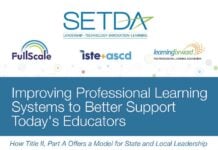The educational landscape is increasingly cluttered with well-intentioned programs—CBE, PBL, AVID, PBIS, MTSS, UDL, and many more. While each program aims to better serve learners, their disconnected implementation often leads to a cycle of fragmented initiatives. Rather than simply adding another program, schools and systems should focus on building strategic learning organizations —systems designed for continuous improvement and adaptation.
This article explores how to move beyond traditional strategic planning and build systems that embrace change. Instead of just defining the “Why” (vision) and “What” (outcomes), it emphasizes the critical “When” — how to strategically manage implementation.
Defining a Strategic System
A strategic system consists of three integrated approaches:
- Directional: Guided by clear priorities and goals, supported by appropriate financial models.
- Operational: Focused on addressing adaptive challenges through research and development, while established protocols handle technical challenges—both with clear success metrics.
- Relational: Focused on leading change through trust, clarity, and focus.
Understanding Strategic Direction
A strong foundation for any strategic direction is understanding community needs and developing a clear Community Vision (the Why). This process often starts with reflecting on past achievements, reviewing the vision/mission, and then articulating a strategy. Unlike rigid, multi-year plans, strategic directions offer flexibility to respond to current and emerging conditions.
A strategic direction should be simple, clear, flexible, with measurable outcomes, and include constant reflection and revision. Its core components include:
- Priorities: Broad themes that organize strategic planning ideas.
- Goals: Specific targets to be achieved for each priority.
- Success Metrics: Trackable measures linked to each goal.
- Projects: Tangible initiatives or pilots that contribute to achieving goals.
- Finances are a crucial limiting factor, and creative funding models can support strategic direction by maximizing spending that directly impacts learners.
A Process for Technical Implementation
Following the definition of a strategic direction, a system of implementation and continuous improvement is needed. To ensure success, schools should leverage Implementation Science, a well-researched process that outlines how evidence-based practices are put into place.
This can be simplified into five steps:
- Notice: Identify the problem to be solved through observations, surveys, and data analysis (e.g., 3rd-grade reading scores, graduation rates).
- Define: Select an evidence-based solution and ensure it has a strong implementation program. Establish a timeline and share it with all stakeholders.
- Align: Train practitioners to ensure consistent implementation and establish quality checks before piloting.
- Practice: Conduct a pilot program and collect data on consistency and efficacy.
- Reflect: Determine necessary changes and either begin a new implementation or move to continuous improvement.
Embracing Research and Development: The Power of Continuous Improvement
Unlike many businesses, schools often lack dedicated resources for research and development. However, innovation zones and flexible funding mechanisms can encourage program innovation and flexibility.
The most common form of R&D in education is the continuous improvement model, championed by organizations like the Carnegie Foundation and implemented through processes like Michigan’s Integrated Continuous Improvement Process (MICIP). This can take various forms at the school level: Plan/Do/Study/Act cycles, Cycles of Inquiry, Action Research, or Design Thinking—all focused on practitioner agency, student perspective, and rapid iteration.
The article outlines a framework that connects human-centered design with cycles of inquiry to create iterative design sprints for adaptive challenges.
Stages of an R&D Design Sprint:
- Notice: Build empathy for teachers, students, and families through data review, interviews, and observations. The goal is to articulate a focused design question.
- Build: Create a potential solution and think expansively before prototyping.
- Test: Gather measurable data on the experience by testing with different groups.
- Share: Critically, share learning (successes and failures) with others in the system.
- Reflect: Decide whether to build a new solution, test the same solution, or return to the Notice phase.
Examples of Design Sprints include: Evaluating collaboration skills, setting goals around standards, awarding skill-based badges, or connecting students with real-world projects.
Making R&D Stick – Critical Conditions for Success
To ensure lasting impact, schools should foster:
- Positive Mindset & Perception: Encourage a growth mindset and openness to new ideas.
- Low Barriers & High Support: Provide adequate time, leadership support, and professional learning.
- Collaborative & Integrated Approach: Foster collaboration and intentionally integrate innovations into existing strategic direction.
- Teacher and Learner Empowerment & Buy-In: Actively seek and value teacher and learner voice and buy-in.
Defining Success Metrics that Matter
Success metrics are vital for understanding strategic progress. Schools should leverage Bronco metrics across Traditional, Transitional, and Transformational systems, with a focus on finding metrics that capture the deeper, long-term impact of a strategic effort.
Leading Change Through Intention and Clarity
Finally, to lead change effectively, leaders should focus on these guiding questions:
- Vision: Is the vision for change clear and compelling?
- Leadership: Do decision-makers have commitment and allocate resources?
- Culture: Is the school culture supportive of change?
- Community: Is there support from the community, and is there a feedback loop?
- Communication: Is there a clear communication plan?
By building strategic learning organizations, schools can create a framework for continuous improvement, where Community Vision translates into a supported strategic direction, powered by both structured implementation and R&D approaches, measured by clear success metrics. This ultimately empowers every student to thrive.





















